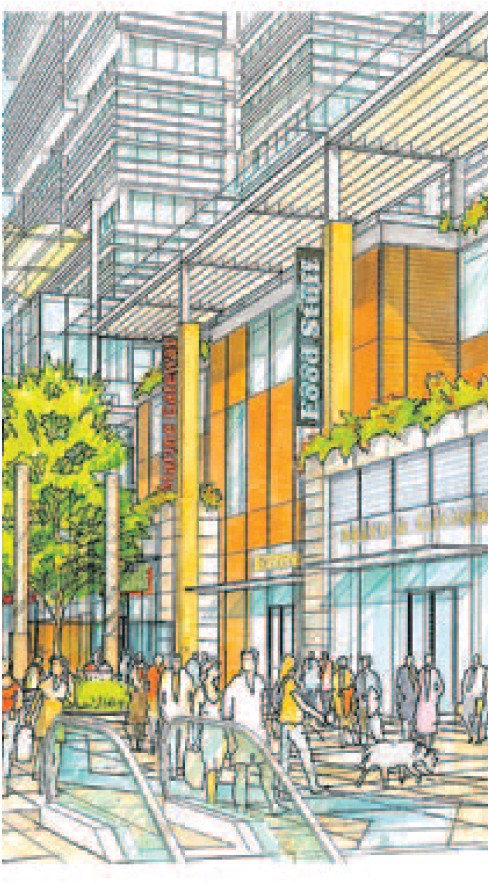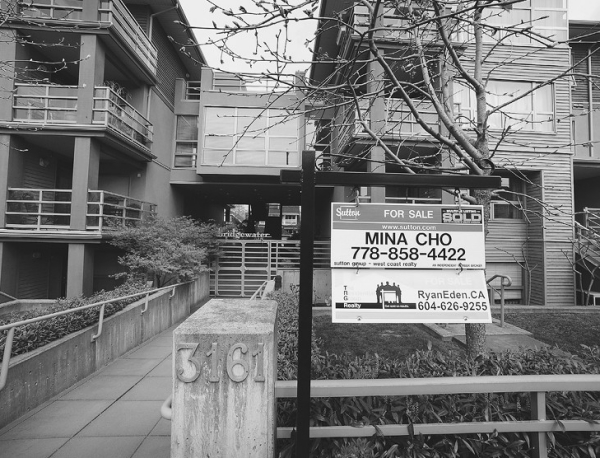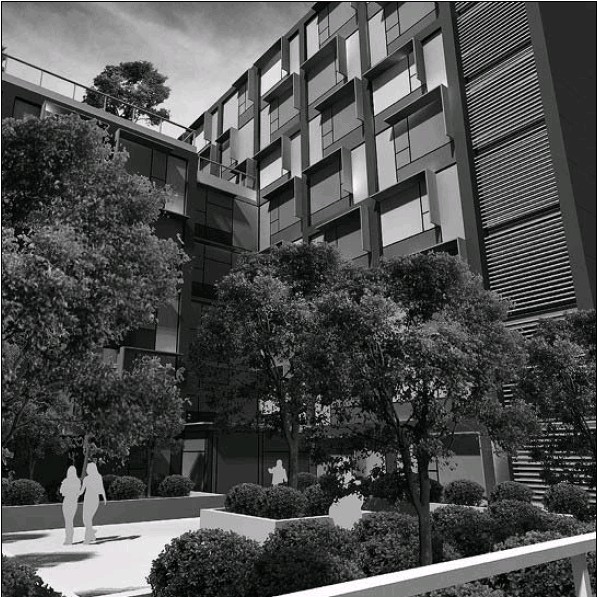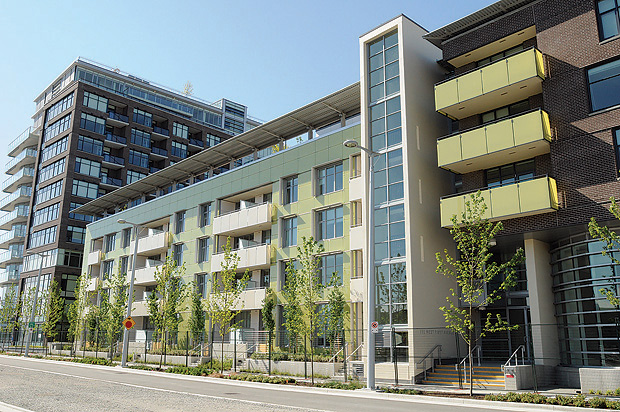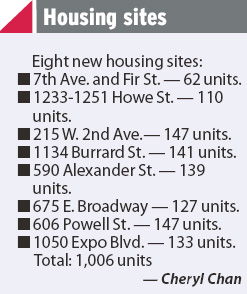Judy Keen
USA Today
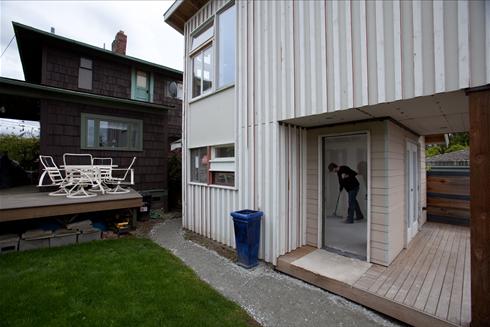
John Stoeck sweeps the 437-square-foot cottage he’s building behind his home in Seattle. The city changed zoning rules to allow cottages in single-family neighborhoods. By Rob Sumner, Red Box Pictures, for USA TODAY
SEATTLE — John Stoeck is building a one-bedroom, 437-square-foot cottage on the spot where his garage stood before a tree fell on it. Construction costs: about $50,000. When the cottage is finished this summer, he plans to rent it for at least $900 a month, which will make a nice dent in his mortgage payments.
His is just one of about 50 tiny cottages sprouting in backyards across the city as it tries to expand affordable housing options in established neighborhoods without resorting to high rises and apartment complexes. The city changed zoning rules to allow cottages in single-family neighborhoods citywide, rejected a proposed cap of 50 cottages a year and helped organize a design competition to spur creation of reasonably priced plans. The point is not just to allow the cottages, but to encourage them.
“I want to preserve rural areas around Seattle, and I don’t want the suburbs continuing to march on without any limits. One way to do that is to add more density to these inner-city neighborhoods,” says Stoeck, 47, an architect.
Backyard cottages are a promising way to address the need for affordable housing without diminishing the character of urban neighborhoods, and they’re creating more options for families who want to live near an elderly parent or adult child. “It’s harder and harder for working people to live in the city,” says former Seattle mayor Greg Nickels, now a fellow at the Harvard University Institute of Politics.
The backyard homes, he says, also help ease traffic jams and reduce pollution.
Seattle tested the backyard cottages initiative in the southeast part of the city starting in 2006, resulting in 28 cottages. It was expanded citywide in December, and 22 more building permits have been issued.
Other cities such as Denver and Faribault, Minn., are allowing for the first time or expanding programs that encourage backyard residences to accommodate growing demand for affordable housing in the wake of the recession and foreclosure crisis.
Unlike attached “granny flats” or basement apartments, backyard cottages are separate buildings, often just a few feet from owners’ homes. Once built, owners such as Stoeck either rent out the cottage or rent out their main home and move into the cottage.
Besides expanding housing options, backyard cottages have another benefit: “It’s really a way to help people hang on to their homes,” says Andrea Petzel, senior urban planner for the city of Seattle. She expects about 40 to be built each year.
The Denver City Council votes next month on a zoning code that for the first time would allow “accessory dwelling units,” including detached cottages, in some residential areas.
It would “balance our housing opportunities and at the same time add density” in areas where affordable rentals are scarce, says Peter Park, community planning and development manager.
Faribault, Minn., which has a rental housing shortage, began allowing freestanding backyard dwellings in October.
“It can be a good thing if you have the proper controls in place,” zoning administrator Greg Kruschke says.
Santa Cruz, which has some of California’s highest housing prices, encourages backyard cottages citywide, and about 40 are built each year. Santa Cruz “did not want to price people out of living here,” says Carol Berg, the city’s housing and community development manager.
The concept evolved from the carriage houses where employees or extended families lived near grand homes in the early 1900s, says Dana Cuff, professor of architecture and urban design at UCLA. That changed in the 1950s, she says, when the American dream meant owning a single-family home on a big lot.
“We need to adapt our living environment to the kinds of families we have now,” Cuff says.
“We have two people working in nearly every household now, so people don’t need as big a yard,” she says.
Other benefits: Owners’ rental income can help fend off foreclosure, and aging parents can move into cottages to maintain their independence, she says.
Backyard cottages “don’t suit everyone, but they’re really right for some people,” Cuff says.
Her view is borne of personal experience: A decade ago, she and her husband moved into one on their property in Santa Monica.
Critics cite privacy concerns
Seattle needs room to grow: Almost two-thirds of the city is zoned for single-family homes. Its population rose from 563,374 in 2000 to 602,000 last year.
Houses are pricey here. The median cost in the fourth quarter of 2009 was $305,500, compared with the national median price of $172,900, the National Association of Realtors says.
Nickels had been intrigued by the idea of backyard cottages for decades before he became Seattle’s mayor in 2002 and made it a priority. Opponents argued that it would double the city’s density, he recalls, but he felt “there was no excuse other than political cowardice not to move forward.”
After the first batch of cottages was built in southeast Seattle, a survey of people who lived near them turned up a surprise: More than half the neighbors didn’t know they were there, he says.
Some critics of the Seattle initiative still worry that backyard cottages will clutter neighborhoods, clash with existing homes, create parking shortages and attract irresponsible renters.
Seattle architect and developer Marty Liebowitz says the cottages could rob neighbors of the privacy they want to “barbecue, entertain guests and walk around naked if they’re kinky.”
Seattle arborist Michael Oxman has another concern: If the idea catches on and many cottages are built, he says, they “would decimate the urban forest of Seattle.” Inevitably, he says, trees will be removed to make room for cottages and parking spaces for owners and tenants.
Chuck Cady, who has sold Seattle real estate for 30 years, says cottages probably increase the value of lots where they’re built but might hurt the value of homes adjacent to them.
“If you’ve got a lovely backyard that’s totally private, it’s worth more than one with a two-story, butt-ugly addition looking down on your backyard,” he says.
In Seattle, “none of the worst-case scenarios happened,” Petzel says. Getting city permits for a typical single-family home can take about three months, but for cottages the turnaround time can be as short as six weeks, she says.
Seattle City Councilmember Sally Clark, a proponent of the initiative, says design standards were written to help ensure neighbors‘ privacy.
Backyard cottages can be built only on lots of 4,000 or more square feet, height is limited based on lot width, and entrances must face away from neighbors. At least one property owner must live in the main house or cottage.
“Sometimes they actually improve the neighborhood,” says Diane Sugimura, Seattle’s director of planning and development. “We don’t believe the majority of homeowners will choose to do this, but it really provides another option … and it allows you an income source.”
‘A great spot’
College student Laura Chamberlain, 20, would love to live in a backyard cottage. She’s tired of overpriced apartments near campus, and the expansion of Seattle’s light rail system makes living away from school more practical, she says.
“A cottage would be a great spot for me while I save enough money to buy a house, and unlike condo living, I might be able to grow my own vegetables,” she says.
Stoeck, who shares the main house with his wife, Jennifer, and son Colin, 9, says that because the cottage is just steps from his back door, choosing the right tenant is important. So is keeping his neighbors happy: He gave them a tour of the cottage and assured the people who live next door that his tenant won’t be able to see into their home.
“You have to be careful about the context and scale of the neighborhood, but I think the idea is great, and I’d do it again in a second,” Stoeck says.
Clark says the economy helped prove cottages’ value.
“In a recession people are definitely looking for ways to pay the bills and for lower-cost housing options,” she says. “Seattle had an overheated rental market, so folks who had backyard cottages had something that was desirable.”
Patrick Leigh, 57, took a different approach to the cottage initiative. He built a bigger new house in front of an existing tiny one on the back of his lot in West Seattle. The houses are for sale. “If people want affordable housing,” says Leigh, a land surveyor, “this is one way to help.
“There are tough choices to be made as population increases. Do we really want to keep building out where people have to commute? I think we’re better off getting more density in the city.”
Less is more for some
Yolinda Ward and Lynn Watkins bought a four-bedroom Craftsman-style house in Seattle’s Columbia City neighborhood four years ago after falling in love with its architectural details and expansive yard. Soon, the couple decided the house was too big, so they built a 600-square-foot cottage behind and over the existing garage and moved into it. They rent the “big house” to Ward’s godson, Erik Norwood, his wife Rebecca and their two children. A friend rents the basement.
Although Watkins, 60, had to forfeit part of her garden space to build the cottage, she loves living in it. “It’s easier to clean and everything’s right here,” she says. The bedroom is on the ground level; upstairs there’s a kitchen and living room.
Original designs for the cottage included big windows facing the back door and deck of the “big house,” says Ward, 61. They decided to move the windows to overlook the garden and eliminated them on the wall with a view of the big house.
Privacy is important, but being close to her godson’s family is part of the appeal, Ward says. She can open a window near her desk and chat with almost-3-year-old Jaeda when she’s playing outside. There’s a big family meal every other Wednesday.
The cottage cost about $135,000, Ward says, and added about $200 to their mortgage payment — an increase covered by the rent they receive, which also covers increased property taxes. The property, appraised at $560,000 before the cottage was added, now is worth $710,000.
The only drawback the couple can think of is that they don’t have room for overnight guests. Watkins still has room for a garden, and the “green” elements they added — including extra insulation, a water heater that kicks in only when hot water is needed and the recycling of runoff water — keep expenses low.
“It’s a very easy way to get regular income, and it will pay for itself,” Ward says. Strangers sometimes knock on their door to ask about the cottage — and how they can build one, too.




